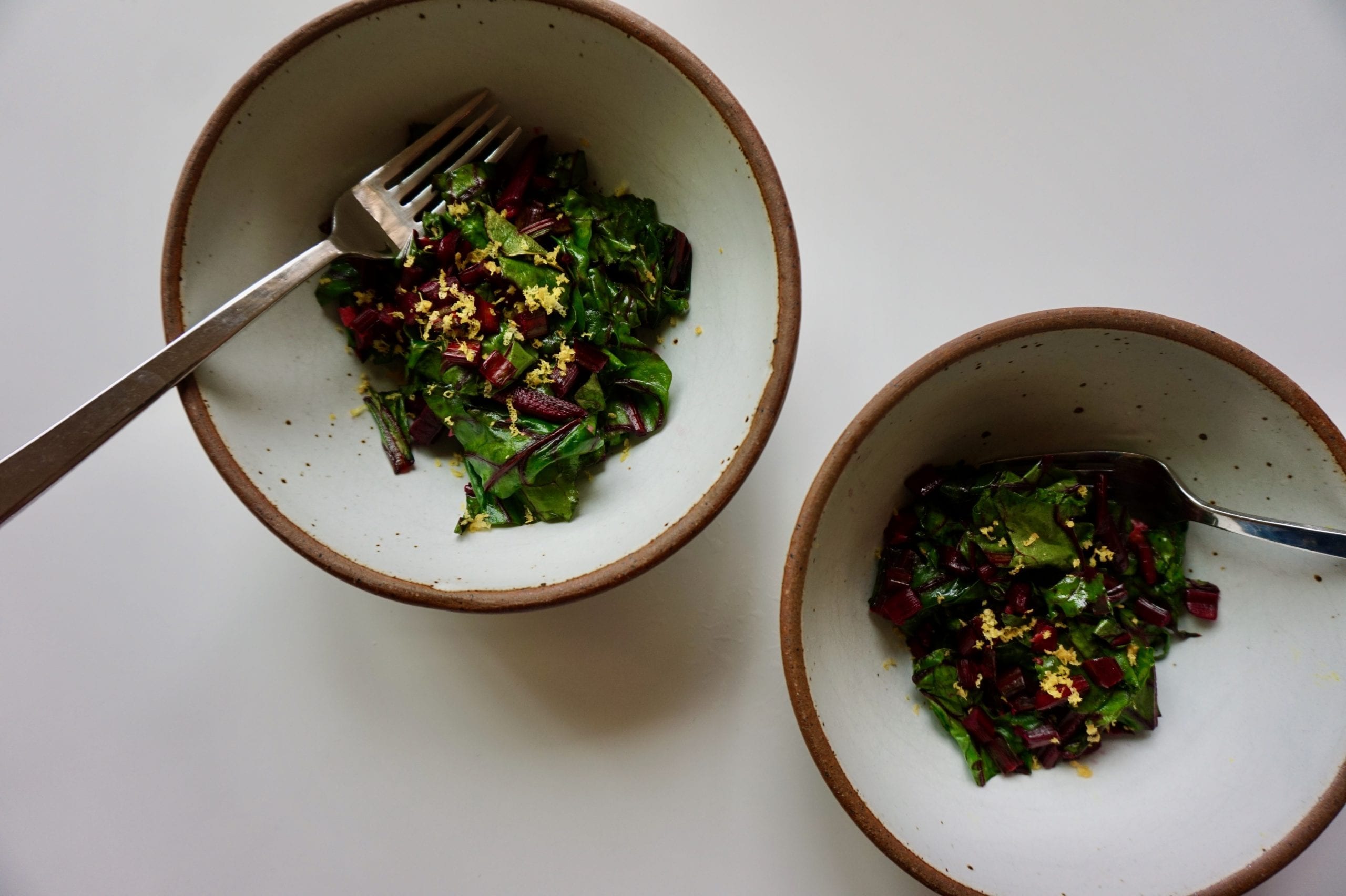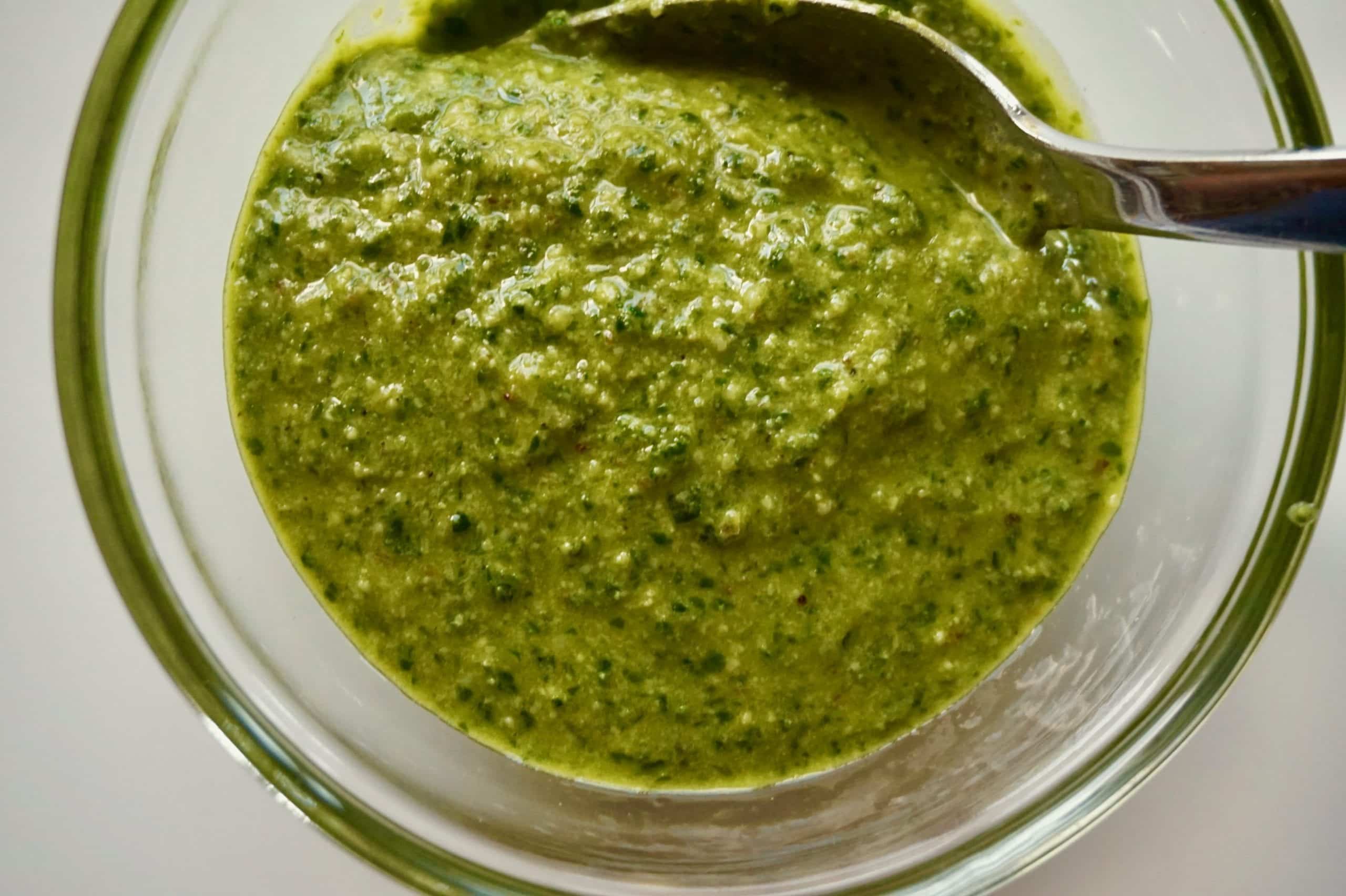By now you’ve likely heard about nose-to-tail eating; a way of approaching cooking and eating that uses every part of the animal and leaves nothing to waste. But have you ever thought about how this applies to vegetables? From kale stems to onion skins, many of the less-desirable vegetable parts have great uses in home cooking.
Chances are there’s a whole lot of veggie goodness going to waste during your meal prepping. Here’s how to waste not, want not and eat healthfully — from stem to root.
TAKE (AND MAKE) STOCK
There isn’t a rule or special recipe required to make great vegetable stock. In fact, some of the most flavorful stocks come together when you combine the bits and bobs of vegetables you’re using throughout the week. Try keeping a bin in your freezer dedicated to vegetable remnants — kale stems, Brussels sprouts ends, carrot peels and onion skins — if it’s a piece of a vegetable, toss it in. When the bin gets full, transfer the contents to a large stockpot, add a pinch of salt and cover with water. Let the mixture sit on low heat for a few hours, simmering out the flavors. Then, strain and transfer to an airtight container and freeze or refrigerate your homemade vegetable stock. It will keep for a week in the fridge, and a month or more in the freezer.
PESTO THE GREEN PARTS
Don’t toss the green tops from your carrots or radishes! Instead, wash them, drain them well and turn them into pesto. Many pesto recipes for pesto call for perky basil leaves, but zesty greens of any kind work. (Just make sure you wash them very well and spin or pat them dry. Both radish and carrot tops tend to be a bit muddy.)

Carrot or Radish Top Pesto
Ingredients
- 3 bunches carrot or radish tops, cleaned and drained
- Kosher salt and freshly ground pepper, to taste
- 1 garlic clove
- 3 tablespoons macadamia nuts or pine nuts
- 1/2 cup (10g) fresh basil leaves, packed
- 1/4 cup (25g) Parmesan, finely grated
- 1/2 cup (118ml) olive oil
Directions
In the bowl of a food processor, pulse together the garlic and nuts until a thick paste forms. Add basil, Parmesan and reserved carrot or radish tops; process until coarsely pureed. Add olive oil and pulse until combined; season with salt and pepper.
Use as a nice green dip for crudités or crackers, toss into pasta or spread onto a grilled flatbread.
Serves: 8 | Serving Size: 1/4 cup
Nutrition (per serving): Calories: 170; Total Fat: 17g; Saturated Fat: 2g; Monounsaturated Fat: 5g; Cholesterol: 0mg; Sodium: 156mg; Carbohydrate: 1g; Dietary Fiber: 0g; Sugar: 0g; Protein: 1g
AMP UP HUMMUS
If you’ve got discarded broccoli stems, you’ve got a great, new, green way to make a healthier hummus. Though this hummus is particularly tasty with discarded broccoli stems, it also works with romesco and cauliflower.
Broccoli Stem Hummus
Ingredients
- 2 cups (350g) broccoli stems, peeled and chopped
- 1–2 cloves garlic
- 1/4 cup (56g) tahini
- Juice of 1 lemon
- 3 tablespoons olive oil
- 1/2 cup (15g) fresh herbs (like thyme or oregano), chopped
- 1/2 teaspoon kosher salt
Directions
Bring a pot of salted water to boil. Add peeled broccoli stems and boil for 5 minutes, or until just tender. While the vegetables are cooking, prepare an ice bath. Drain the vegetables of their cooking water and plunge them into the ice bath. Drain the stems again and place them in the bowl of a food processor along with the garlic, tahini, lemon juice, olive oil, chopped herbs and salt. Process the mixture until smooth, stopping to scrape down the sides if necessary. Adjust the seasoning as needed with salt and pepper.
Serves: 10 | Serving Size: 1/4 cup
Nutrition (per serving): Calories: 85; Total Fat: 8g; Saturated Fat: 1g; Monounsaturated Fat: 0g; Cholesterol: 0mg; Sodium: 57mg; Carbohydrate: 2g; Dietary Fiber: 0g; Sugar: 0g; Protein: 2g
SAUTE A NEW KIND OF SALAD
Bringing home beet greens? Don’t compost them. Instead, sauté them and serve them for dinner. Beet greens pack all of the punch of their red roots, but with the boosted benefits of being nutrient and mineral rich, just as good greens should be. Served with salmon or roasted chicken at dinner or with eggs for a quick brunch, these almost-discarded greens are gold.

Sautéed Beet Greens With Lemon and Garlic
Ingredients
- 1 bunch beet greens
- 1 cup water
- 1 clove garlic
- 1/2 lemon
- 1 tablespoon olive oil
- 2 teaspoons butter
- Salt and pepper, to taste
Directions
Wash beet greens and separate stems from leaves. Cut stems into 1-inch pieces. Chop leaves into pieces.
Place stems in a large skillet with 1 cup of water. Cover and simmer 4–7 minutes or until fork tender.
Drain well. Return the pan to the heat and add the olive oil to warm. Add the garlic and sauté until fragrant. Add the drained stems, chopped leaves and salt and pepper. Squeeze the lemon over the greens and sauté 2–3 minutes or until greens are wilted. Remove from heat, stir in butter, season with additional salt and pepper, to taste. Serve warm.
Serves: 4 | Serving Size: 1/2 cup
Nutrition (per serving): Calories: 51; Total Fat: 5g; Saturated Fat: 2g; Monounsaturated Fat: 3g; Cholesterol: 5mg; Sodium: 118mg; Carbohydrate: 1g; Dietary Fiber: 1g; Sugar: 0g; Protein: 2g
Originally published May 2020, updated April 2023
Ready to take the next step? Unlock MyFitnessPal Premium to access custom goal settings, quick-log recipes, and guided plans from a registered dietitian. Premium users are 65% more likely to reach their weight loss goals!




